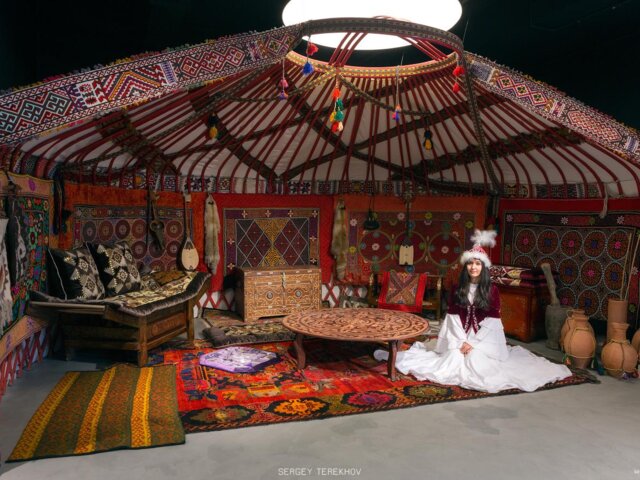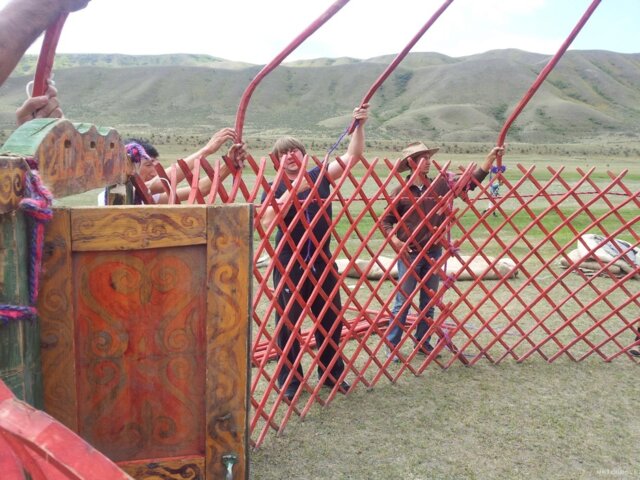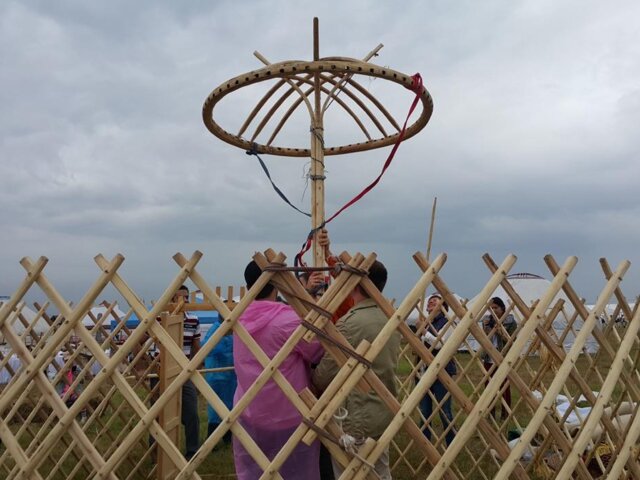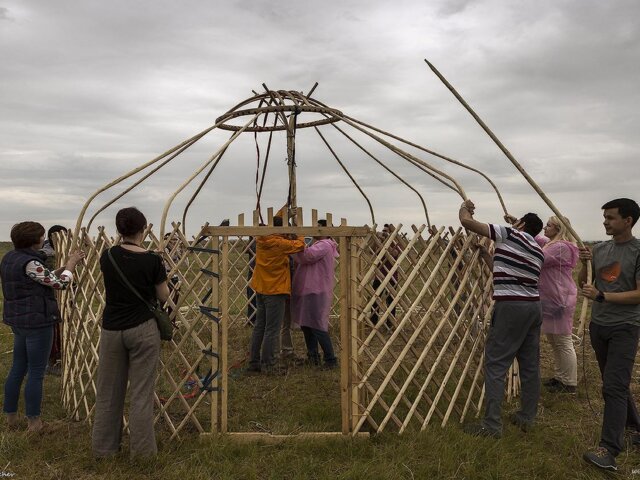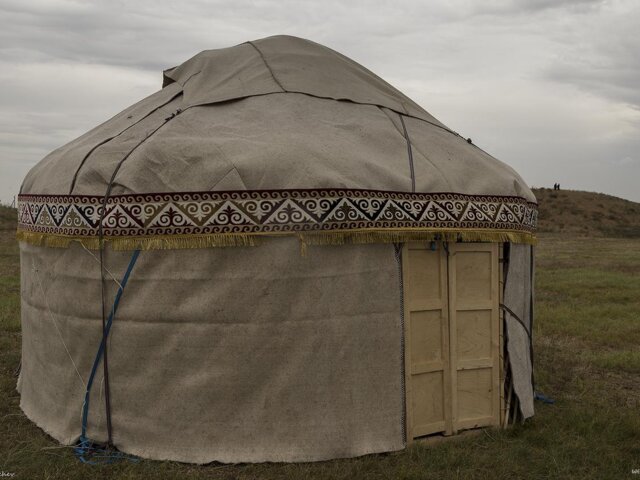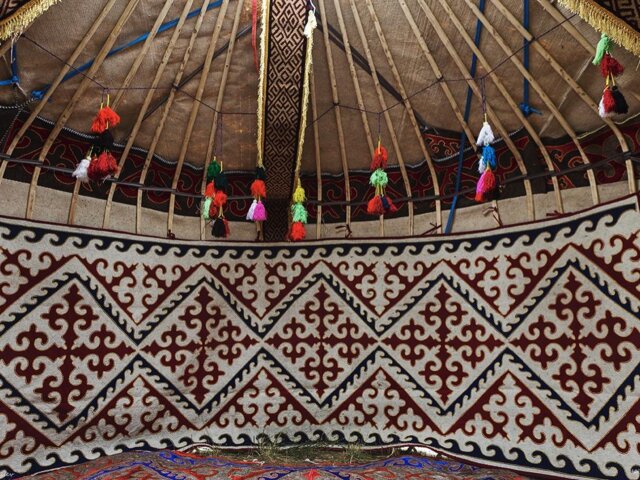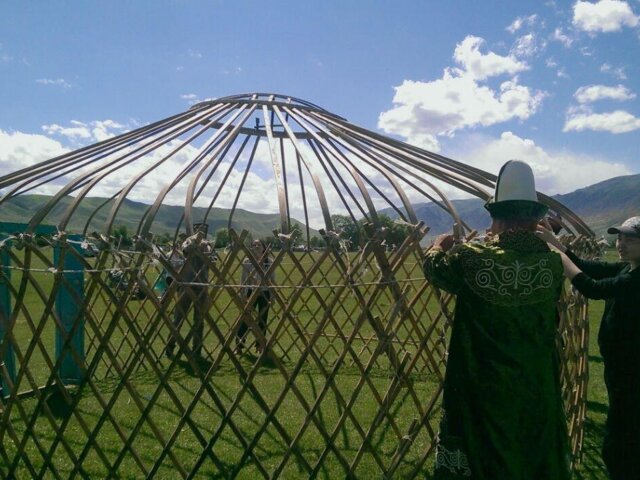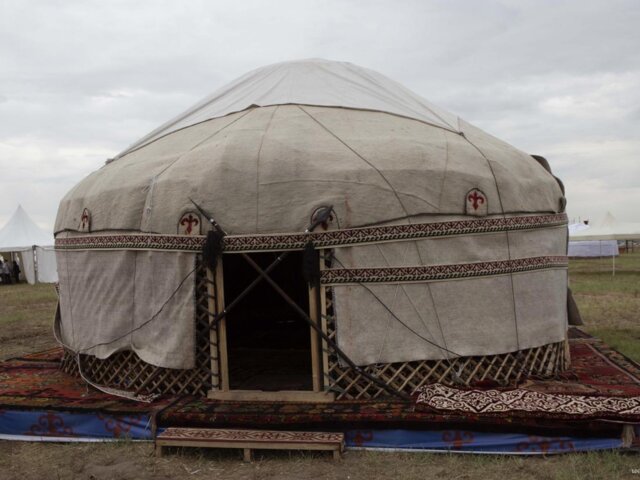Kazakh Yurt
The yurt is a remarkable dwelling that has served nomadic tribes for centuries. Its design makes it easy to assemble, disassemble, and transport, making it an essential tool for traveling across vast distances. It is also a comfortable and unique home that holds a special place in Kazakh culture. In fact, the yurt has been so intertwined with the lives of the Kazakhs that the word «yurt» itself can be translated as «homeland» or «nation.»
But the yurt is more than just a practical dwelling. It represents a special ideology that emphasizes living in harmony with nature and without restrictions. The absence of corners in a yurt is a reminder to its occupants to embrace the circularity of life and to value communal living over individualism. The yurt is an embodiment of the nomadic lifestyle, and its existence is a testament to the ingenuity of humankind.
However, as we continue to modernize and urbanize, there is a risk that the yurt may become a thing of the past. We should recognize its value as a cultural symbol and a unique architectural achievement, and make efforts to preserve and promote it. The yurt should be celebrated and cherished as a reminder of our shared history and a testament to human adaptability.
Kazakh Yurt Design
The Kazakh yurt, a traditional nomadic dwelling, is made up of three primary wooden components: kerege, uyk, and shanyrak. Kerege is a folding wooden lattice that serves as the yurt's foundation. The uyk are long wooden poles that support the kerege and create the yurt's circular shape. The shanyrak is a dome-shaped wooden frame that sits on top of the yurt and has a circular opening in the center for smoke to escape. The shanyrak is not only a functional component of the yurt but also a symbol of the family's continuity and heritage, and it is often passed down through generations.
The yurt's wooden structure is covered with felt, which provides protection from the elements. The felt can be easily replaced or repaired, and it is essential for keeping the yurt warm and dry in harsh weather conditions. The felt is secured to the wooden structure with ropes, and the bottom edge of the felt is fastened to the ground with pegs.
Inside the yurt, there is a central hearth with a holder for a boiler or cauldron. The hearth is the heart of the yurt, providing heat and light, and is where the family gathers to cook, eat, and socialize. The far end of the yurt is reserved for the family's possessions and serves as a place to receive guests.

Turkic and Mongolian Types of Yurts
There are two main types of yurts: the Turkic type used by Kazakhs, Kyrgyz, and Turkmen, and the Mongolian type. The main difference is that the Mongolian yurt has wooden pillars in the center to support the ceiling, while the Turkic yurt has curved roof poles fastened to the walls. This design makes the Turkic yurt more elegant and harmonious, without any central pillars or partitions, and easier to transport. The Mongolian yurt's design allows for faster installation, but it is bulkier and more cumbersome.
Origin of the Yurt
The yurt's origins can be traced back to the huts of primitive people and the tents of nomads. There are two possible timelines for the yurt's appearance: either in the 12-9th or the 8-5th centuries BC, as evidenced by rock drawings and manuscripts of ancient peoples. However, some sources suggest that the yurt developed after the Mongol conquests of the 13th century, as seen in Chinese, Central Asian, Iranian, and Turkish miniatures. Regardless of its exact origins, the yurt has played a significant role in the nomadic lifestyle and culture of many peoples throughout history.

